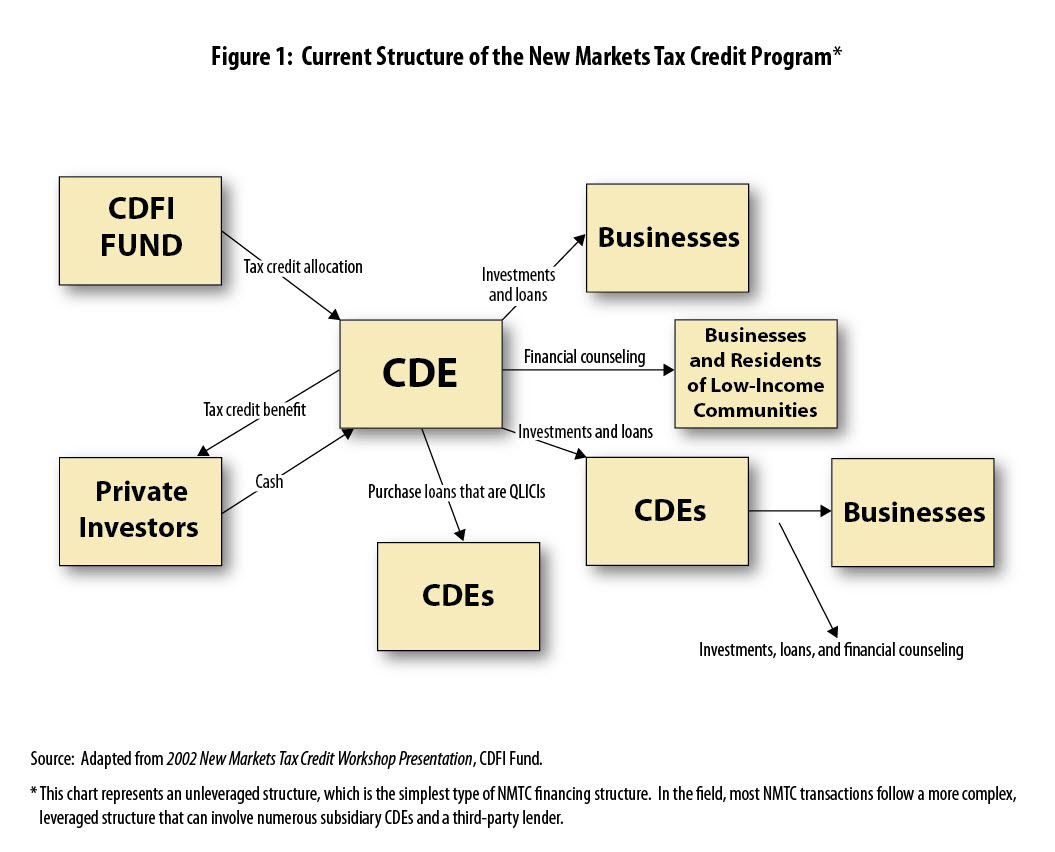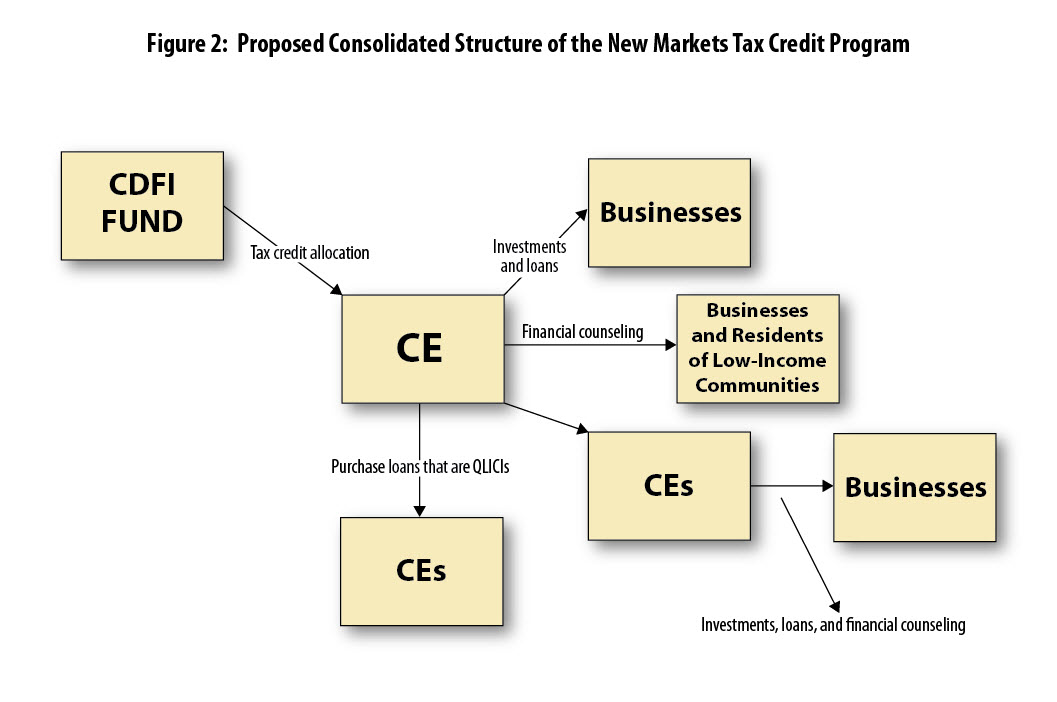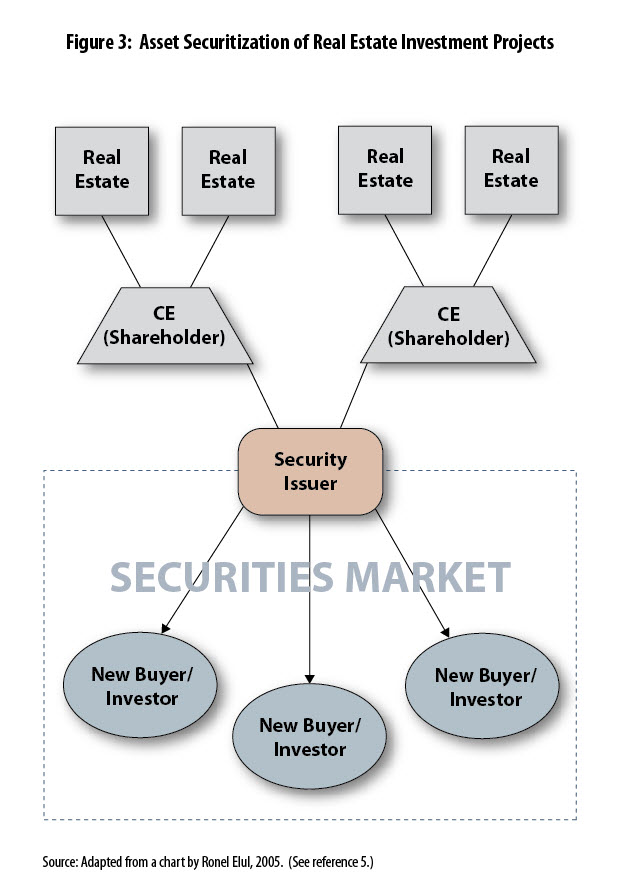In May 2011, the Federal Reserve Banks of St. Louis, Atlanta, Dallas, and Minneapolis presented Exploring Innovation: A Conference on Community Development Finance. The event featured an essay contest, open to undergraduate and graduate students studying in the districts of the four sponsoring Reserve Banks, that asked entrants to address this question:
Is the New Markets Tax Credit (NMTC) Program the most effective way to subsidize the creation of equity in low-income community businesses? Please suggest one or two options that could simplify NMTC transaction structures and augment the amount of equity available to qualified low-income businesses.
As it turns out, the question was a prescient one. Several months later, in November 2011, the U.S. Department of the Treasury's Community Development Financial Institutions (CDFI) Fund, which administers the NMTC Program, issued a notice seeking public comments on how to increase the program's efficiency and effectiveness. The comment period closed on February 6, 2012.
The Exploring Innovations essay contest drew numerous entries, and a panel of judges from the four sponsoring Reserve Banks selected three winners. Among them was an essay submitted by Guncha Jumakuliyeva, an undergraduate studying in the Ninth Federal Reserve District. Jumakuliyeva recently completed a bachelor's degree in economics at Minnesota State University Mankato. The following article is adapted from her winning essay.
Views expressed in this article do not necessarily represent those of the Federal Reserve Bank of Minneapolis or the Federal Reserve System. Publication of this article is not intended as a response to the CDFI Fund's call for public comments on the NMTC Program.
Restructuring the New Markets Tax Credit Program: Three proposed changes for increasing efficiency
By Guncha Jumakuliyeva
The economic recession1/ that began in December 2007 resulted in low asset liquidity and high capital costs, which adversely affected loans and investments. The recession limited the availability of loans and put an even greater strain on low-income communities' ability to attract investors (see reference 10). These trends have left the U.S. Department of the Treasury's New Markets Tax Credit (NMTC) Program as one of the last resources for creating equity in low-income communities. However, there are structural inefficiencies that limit the program's effectiveness. This article presents a three-part proposal for restructuring the NMTC Program in a way that maximizes its efficiency in our recovering economy.
NMTC Program structure
The NMTC Program intends to stimulate private capital investments in economically distressed communities (see references 1, 6, 11, 12, and 14). The program provides tax credits to individuals or corporations that invest in job creation or material improvements in those communities. NMTC investors channel their investments through specialized organizations called Community Development Entities (CDEs), which have a primary mission of serving low- to moderate-income populations.
The current structure of the NMTC Program was designed to prevent tax credits from being allocated directly to private investors, and to prevent investors from providing loans directly to recipients (see references 1, 6, and 11). Rather, CDEs act as intermediaries for private investors, loan recipients, and community development financial institutions (CDFIs) (see references 1, 6, and 11). (See Figure 1.) The U.S. Department of the Treasury's CDFI Fund allocates NMTCs to CDEs through a competitive process. CDEs then offer these tax credits to private investors in exchange for equity investments in the CDEs. The credits equal 39 percent of the original investment, and investors receive them over a seven-year period. CDEs use proceeds from these investments to make investments in and loans to businesses in Qualified Low Income Communities (QLICs), to make investments and loans to other CDEs, and/or to purchase loans that are QLIC investments (QLICIs). CDEs can also use the proceeds to provide financial counseling to businesses and residents of QLICs.
 click to view larger image
click to view larger image
This program structure, which involves multiple participants, complex paths of interaction, and complicated Internal Revenue Service (IRS) regulations, has created inefficiencies. Indeed, several studies on the NMTC Program have found inefficiencies that can be categorized into three areas: (1) high transaction costs; (2) inappropriate targeting of benefits; and (3) insufficient monitoring (see reference 1).
Significant structural changes are necessary in order to eliminate these drawbacks and increase the program's efficiency in attracting private equity to low-income communities. This article proposes three changes in particular that deal directly with the sources of the inefficiencies. These changes are: (1) consolidation of CDEs with private investors, to simplify the structure of the NMTC Program and reduce transaction costs; (2) asset securitization, to motivate private equity investment in low-income communities; and (3) assessment of the program by using the prices of the securitized assets as signals of recipients' performance, which will enable recapture of the tax credits. These changes are discussed in greater detail below.
Proposed Change #1: Consolidation
The first proposed change addresses the complexity of the NMTC Program. As indicated above, the program's structure, interaction paths, and governing IRS regulations are complex and can involve high transaction costs and other cost inefficiencies (see reference 1). For example, in a typical NMTC structure, the investor purchases the tax credit at a discounted rate. This reduction in price, when added to fees assessed by accountants or attorneys, can reduce the amount of equity left in the low-income community business after seven years by 35 to 50 percent.
A solution is to consolidate the entities receiving NMTC tax subsidies with CDEs. In other words, NMTC recipients and CDEs will form legal partnerships or affiliations. Consolidation of private investors (corporate and individual) with CDEs will make the program structure more comprehensible and more cost-efficient. Since some private NMTC investors are already affiliated with CDEs, this change will not be completely unfamiliar and should not be difficult to implement (see reference 1). In the new structure, as private investors would already be included in Consolidated Entities (CEs), their interaction paths would consist of dealing only with the CDFI Fund (for tax allocation purposes) and with the investment, loan, and/or financial counseling recipients. (See Figure 2 below.)
 click to view larger image
click to view larger image
Consolidation of private investors and CDEs would have several benefits, in terms of reporting and monitoring costs, particularly for non-real estate NMTC projects. Consolidation would create an opportunity for better investment abilities due to the joint expertise that would reflect the interests of both sides (investor and CDE). A simplified, united compliance-related report for CEs would simultaneously decrease transaction costs and increase efficiency. Besides, as a result of consolidation, CDEs and private investors would monitor each other's behavior, which would not only be cost-efficient, but would align with the interest of regulators.2/
Proposed Change #2: Asset Securitization
The second proposed change for increasing the NMTC Program's effectiveness calls for implementation of asset securitization of real estate investment projects and collateral loans. (See Figure 3.) Asset securitization refers to the process by which NMTC real estate projects would be packaged as investment instruments and sold to investors. The effects of asset securitization have been studied by many researchers in the fields of economics, business, finance, and law from different perspectives. Most of these studies recognize that asset securitization increases the value of the firm that issues the securitized assets, and thereby provides opportunities, especially to mitigate risks to small firms (see references 3, 8, 9, 15, and 16). Since a large share of NMTC allocations are used for real estate projects, asset securitization would be an important change to the NMTC Program. It would enhance monitoring of managerial behavior and improve incentives (see references 2, 14, and 19). The goal of asset securitization, applied to NMTC real estate investment projects operating in low-income communities, is to increase their financial health, thereby increasing the interest of potential private investors.
An additional important advantage of adding asset securitization to the NMTC Program would be better monitoring of real estate projects and their managers. Asset securitization would give the shareholders, or CEs, the ability to monitor the performance of the NMTC financing recipients based on the asset prices in the market. This virtually automatic monitoring process would be mostly based on managerial performance, which is assumed to have the most important impact on project performance (see reference 9). This is an important aspect of the monitoring process, since financial statements on the current performance, per se, do not inform about future value fluctuations.3/
 click to view larger image
click to view larger image
Furthermore, with asset securitization, the price of the assets will reflect the financial performance of the real estate projects. It is, therefore, in the CEs' interest to see the costs of the projects controlled.4/ The market price for the securitized projects would also improve the CDFI Fund's ability to monitor the CE's actions and determine if they are optimal. Requiring CEs to be shareholders of these assets provides them with proper incentives for maximizing profits and minimizing costs.5/
Upon the sale of securitized assets to new buyers (i.e., new investors), the distribution of tax subsidies will depend on the point in time at which the transaction takes place. If the new investor decides to "buy" securitized NMTC projects or loans during the first seven years after the inception of the tax subsidy, the residual tax credit may be captured by the new investor starting from the point at which the transaction is completed (or ownership is established). The conditions of the tax subsidies would remain the same as they were for the original investor (i.e., CEs).6/ However, if the transaction takes place following the seventh year after the inception of the tax subsidy (i.e., after the tax subsidy has been fully captured by the original investor), then the tax subsidy would not transfer to the new investor (owner). Such conditions on the capture of the tax credits would ensure that CEs have an incentive to not only invest in the project or make loans, but also maintain their success in order to keep their market value high. Thus, the major attraction for interested buyers of the securitized projects and loans would be their market value and profit potential.
Though the major goal of asset securitization is to attract private investors, it would also lead to greater market efficiency. Securitized assets that are issued for the market would have pre-formulated risk and reward arrangements, inducing private investors to obtain the asset and avoid transaction costs associated with assembling an alternative portfolio7/ (see reference 8). This would also induce private investors who are interested in portfolio building to build their portfolios from the securitized assets that have formulated risk and reward arrangements (see reference 8).
Despite all the benefits, asset securitization in the mortgage industry has been criticized as a cause of the recent financial crisis. However, Shin (see reference 14) contends that the cause of the crisis was "distorted incentives that developed at all stages of the securitization process," and that securitization itself is not harmful for the system. Rather, he argues that neglect of safety measures is the main harm. Asset securitization of NMTCs would require CEs to become shareholders of the assets, thereby ensuring the assets' low risk potential.
In sum, investors consider monitoring, information, and risk issues, in addition to profit maximization, when evaluating assets. At the time of implementation, securitization would increase the value of the firm that issues the securitized assets, thereby increasing its chances to survive and even prosper. Securitization also would enable the CDFI Fund to monitor managerial behavior. Finally, asset securitization is an essential element in attracting, motivating, and actually benefiting private investors and low-income communities. It would create a better NMTC investment environment that would feature pre-formulated risks and returns, which would be cost-efficient and favorable to potential investors.
Proposed Change #3: Assessment
The third proposed change to the NMTC Program, assessment, is an outgrowth of the asset securitization change. Once securitization is introduced into the NMTC Program, market prices of the assets securitized could be used as signals of the NMTC funded projects' success. This way of evaluating assets is cost-efficient, and it also may induce better risk bearing for the firms issuing the securities (see reference 8). The CDFI Fund needs only to perform an analysis of asset prices in order to decide whether to recommend the recapture of tax credits from inefficient or unsuccessful projects. Market estimates of project efficiency and value would enable early detection of ineffective projects, which in turn would enable the CDFI Fund to screen and recommend the recapture of tax credits from inefficient projects, decreasing the cost of tax credits to the taxpayers.
Attracting more investments to low-income communities
In sum, if the three proposed changes discussed above were implemented, the NMTC Program would function more efficiently and cost-effectively. By securitizing the assets of NMTC projects, market forces would create proper incentives for better administration and lower costs. The opportunity to profit from such assets would attract more private equity investments to the low-income communities that the NMTC Program is designed to benefit.
References
- Martin D. Abravanel, Nancy M. Pindus, and Brett Theodos, Evaluating Community and Economic Development Programs: A literature review to inform evaluation of the New Markets Tax Credit Program, 2010.
- P. Jefferson Armistead, "Community Perspective: Is the NMTC Making a Difference in Low-Income Communities?" Federal Reserve Bank of San Francisco Community Development Investment Review, 1(1), 2005. Pages 13-20.
- Kenneth M. Ayotte and Stav Gaon, "Asset-Backed Securities: Costs and Benefits of "Bankruptcy Remoteness," Texas Finance Festival, 2005.
- Evan J. Douglas, "The Simple Analytics of the Principal-Agent Incentive Contract," The Journal of Economic Education, 20 (1), 1989. Pages 39-51.
- Ronel Elul, "The economics of asset securitization," Federal Reserve Bank of Philadelphia, Business Review, Third Quarter 2005. Pages 16-25.
- Jennifer Forbes, "Using Economic Development Programs as Tools for Urban Revitalization: A Comparison of Empowerment Zones and New Market Tax Credits," University of Illinois Law Review 177, 2006.
- Sanford J. Grossman and Oliver D. Hart, "An Analysis of the Principal-Agent Problem," Econometrica, 51(1), January 1983. Pages 7-45.
- Claire A. Hill, "Securitization: A Low-Cost Sweetener for Lemons," Washington University Law Quarterly, 74 (4), 1996.
- Edward M. Iacobucci and Ralph A. Winter, "Asset Securitization and Asymmetric Information," Journal of Legal Studies, 34, 2005.
- Victoria Ivashina and David S. Scharfstein, Bank Lending During the Financial Crisis of 2008, 36th Annual European Finance Association Meeting in Bergen, Norway, July 30, 2009.
- Laurie Lambie-Hansen, "Addressing the Prevalence of Real Estate Investments in the New Markets Tax Credit Program," San Francisco: Federal Reserve Bank of San Francisco, 2008.
- Daniel J. McGrath, Bringing Good Things to Life: New Markets Tax Credits and the Opening of Low Income Communities to Investment, Including a Case Study of Pittsfield, Massachusetts, Massachusetts Institute of Technology, 2008.
- Erin Mierzwa, "New Markets Tax Credit Program," Technical Briefs, Federal Reserve Bank of Philadelphia, June 2007.
- Ellen Seidman, "The New Market Tax Credit: A Valuable Tool for Economic Development," The Living Cities Policy Series, 2007.
- Hyun S. Shin, "Securitisation and Financial Stability," The Economic Journal 199 (596), 2009. Pages 309-332.
- Jure Skarabot, Asset Securitization and Optimal Asset Structure of the Firm, EFMA 2001Lugano Meetings, 2001.
- Anna Steiger, "Using New Markets Tax Credits to Mitigate the Impact of Foreclosures on Communities," New England Community Developments, Federal Reserve Bank of Boston, Issue 3, 2008.
- U.S. Business Cycle Expansions and Contractions, National Bureau of Economic Research, 2010. Available at http://www.nber.org/cycles/dec2008.pdf.
- 2009 NMTC Program Allocation Booklet, U.S. Department of the Treasury: Community Development Financial Institutions Fund web site, 2009. Available at www.cdfifund.gov/docs/2009/nmtc/2009%20NMTC%20Program%20Allocation%20Booklet.pdf.
- New Market Tax Credit Program Information Session, U.S. Department of the Treasury: Community Development Financial Institutions Fund web site. July 2002. Available at /www.cdfifund.gov/what_we_do/PMarchive.asp?programID=5.
1/ The National Bureau of Economic Research defines a recession as "a significant decline in economic activity spread across the economy, lasting more than a few months, normally visible in real GDP, real income, employment, industrial production, and wholesale-retail sales."
2/ Despite the advantages of such consolidation, some existing CDEs might prefer to operate independently and work with several investors instead, because such an arrangement would give them greater financing ability. This proposal would accommodate that preference by allowing CDEs to join with other investors.
3/ See Iacobucci and Winter (reference 9): "The impact of managerial decisions on this present value are more important to shareholders than the impact on current cash flows"; with asset securitization, shareholders' incentives will be aligned with those of the recipients, the intended beneficiaries of the NMTC Program.
4/ This brings up the principal-agent problem within the projects, wherein one party—the agent (manager)— is to take an action that the other party—the principal (owner)—cannot observe. Moreover, this action affects the outcome (i.e., the total amount of consumption or money that is available) to be divided between them (see reference 7). Here, the outcome represents the performance quality of the project that is to be evaluated by the market. A potential problem with the asset securitization proposal arises when the principal/CDFI is not able to monitor the agent's/CE's actions. (See references 4 and 7 for more on the principal-agent problem.)
5/ CEs would also be shareholders of the projects to which they provided loans, at least for the period of maturity.
6/ Conditions regarding the ownership of project "shares" and the payment would also remain the same as for the original investor (i.e., CEs), but may be changed after the transaction is completed.
7/ Hill (see reference 8) states that "each investor wants an investment portfolio that meets its needs. Every new type of security created can reduce an investor's transaction costs in assembling its desired portfolio." Securitized assets provide pre-defined risk and reward terms that would otherwise have to be obtained at higher cost.





